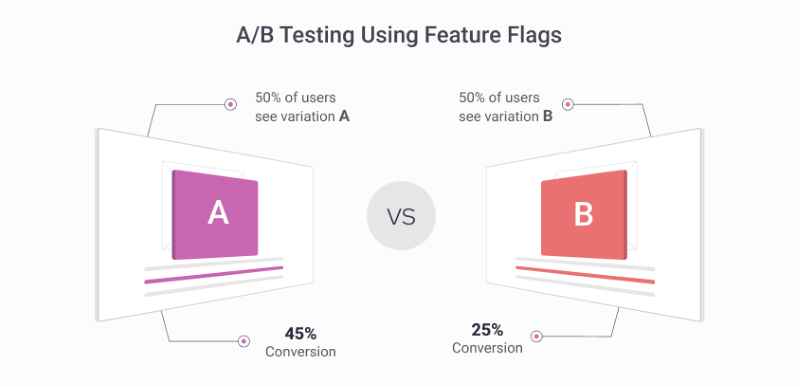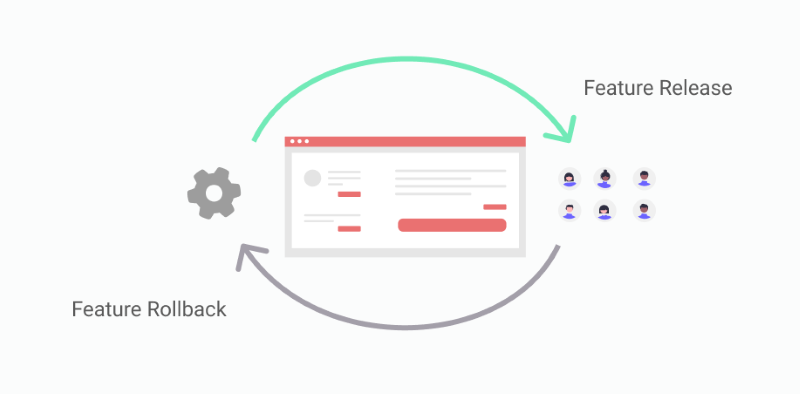Best Feature Flag Platform
(The Non-Boring Guide For 2025)
A feature flag platform enables developers to manage the rollout of new features or changes to their applications in a controlled and safe manner. By using feature flags, developers can make changes without deploying a new version. This allows for faster iteration and experimentation and makes it easier to roll back changes if necessary. With the right feature flag platform, your team can move faster and with more confidence, making your users happy.
How can you use a feature flag platform?
Here are some popular use cases for feature flagging tools:
Product testing
Using feature flags, developers can push new features or changes to a small group of users before making them widely available. This allows for early feedback and ensures changes do not break the existing application. It's a great way to test new features in a production environment without impacting all users.

Canary launches
A canary launch releases a new version of an application or feature to a small group of users before the entire user base. Often used with A/B testing, feature flagging platforms make canary launches easy to set up and manage.
Easier rollbacks
If something goes wrong with a new feature, you can use a feature flag to quickly and easily roll back the change. This minimizes disruptions for your users and gives you the confidence to experiment and iterate quickly.

Continuous delivery
Feature flagging tools can automate delivering new features or changes. By using feature flags, you can push changes live without creating a new build, speeding up the overall release cycle.
What is the best feature flag example?
Developers use feature flags to enable or disable features in their applications. For example, launching a new feature to a small group of users first allows for feedback and ensures the feature does not break the existing application.
What are some feature flag best practices?
When using feature flag tools, consider these best practices:
Use a single system for feature flag management
Leveraging multiple tools can become complex. It's important to use a single system for managing feature flags to have a clear overview of all features and changes.
Clean up and remove obsolete flags
Over time, certain features or changes may become irrelevant. Regularly clean up obsolete flags to keep your application lean and efficient.
Ensure that feature flags are properly documented
Proper documentation ensures everyone on the team is aware of what each flag represents and uses them correctly.
Prevent dependencies between flags
Avoid dependencies between flags. Each flag should work independently to keep management simple and avoid complexity.
When are feature flags necessary?
Overusing feature flags can lead to a messy codebase. Use them sparingly and only when necessary to avoid a convoluted codebase.
How To Pick The Right Feature Flagging Platform
There are many feature flagging tools on the market, but few meet developers' needs. If you want to start with feature flags, ConfigCat is a great choice. This feature flag service is easy to learn and offers excellent support with no hidden surprises. Try ConfigCat today. Created by developers for developers with ❤️.
